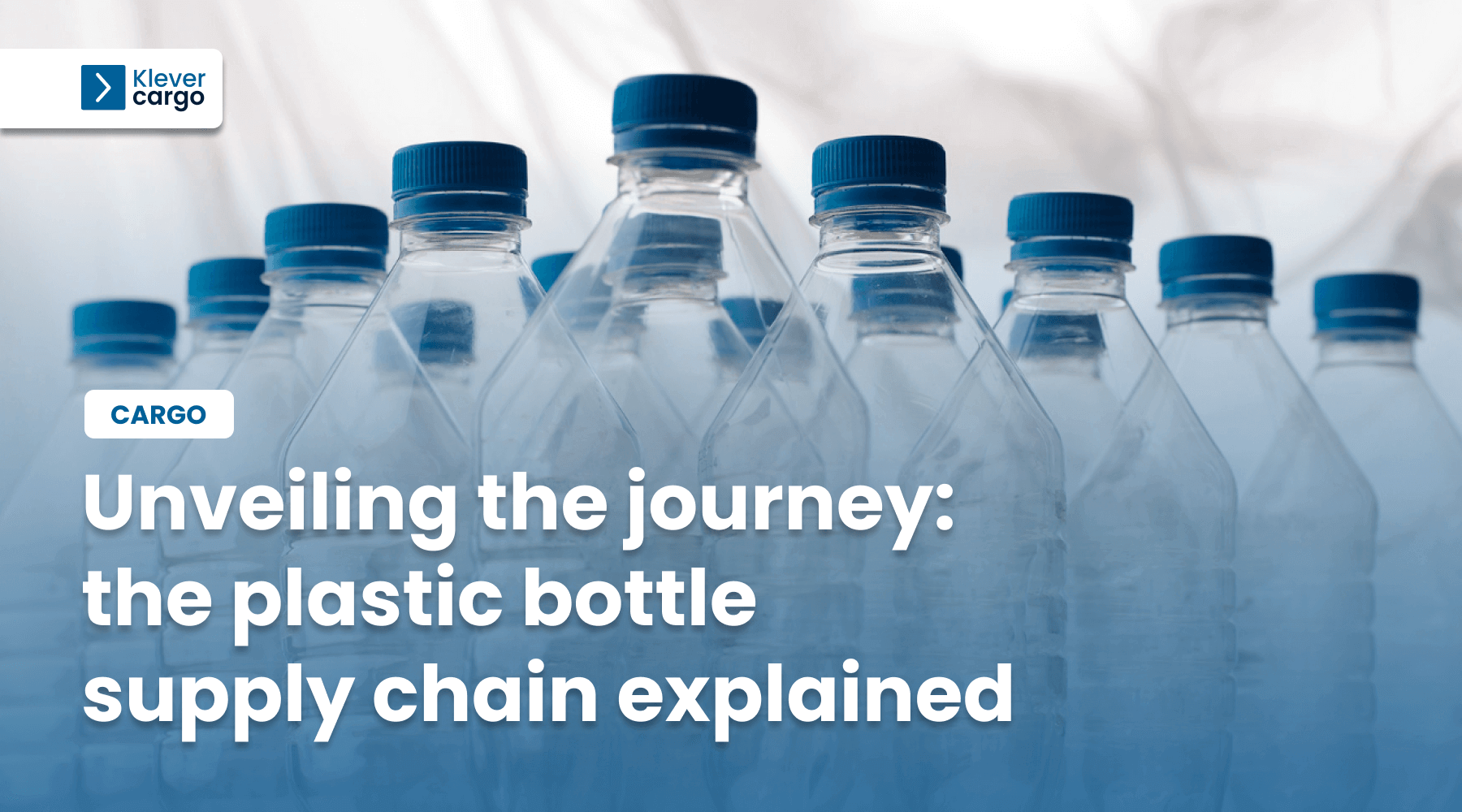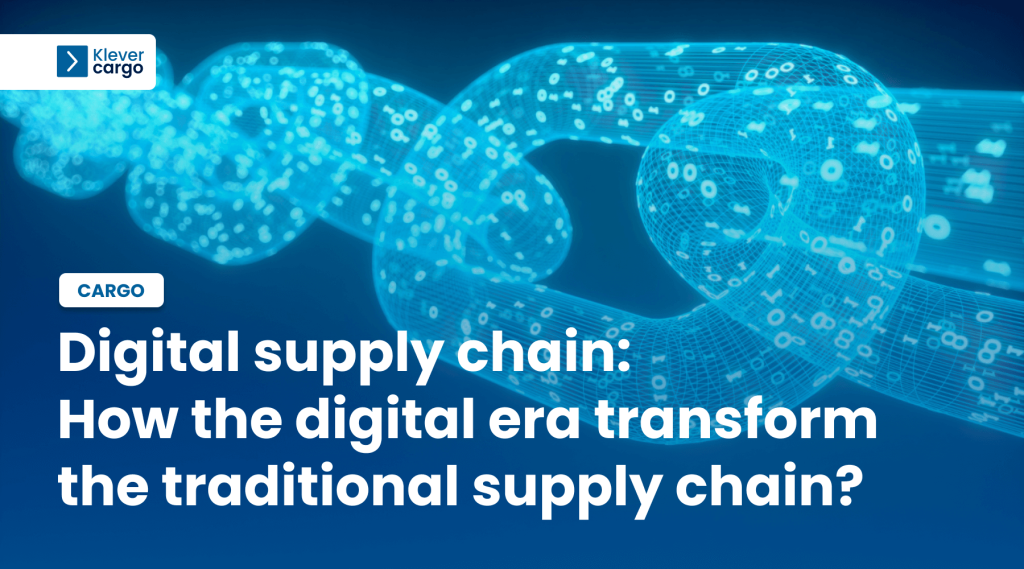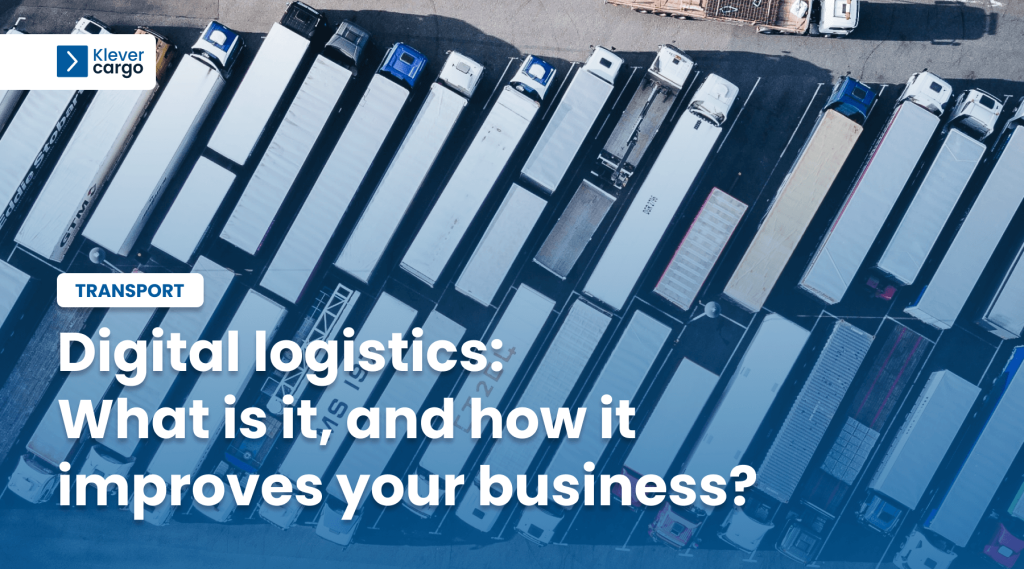Plastic is an integral part of our daily lives, with its presence felt almost everywhere we look. From household items to industrial applications, imagining a world without plastic is hard. However, one product stands out as the epitome of our plastic consumption—the plastic bottle.
They are so common that their role in our daily lives often goes unnoticed. But behind their unassuming appearance lies a complex and fascinating journey through the plastic bottle supply chain.
The beginning of the plastic bottle journey – raw material production

Plastic bottles go through a fascinating journey from crafting to placing them on a shelf of your local store. It all starts with raw materials that will eventually be transformed into those familiar containers that hold our favourite beverages and liquids.
What materials are used to make a plastic bottle?
The primary materials used in the production of plastic bottles are Polyethylene Terephthalate (PET) and High-Density Polyethylene (HDPE). PET is commonly used for clear plastic bottles, while HDPE is ideal for opaque containers. It’s estimated that around 30 million metric tons of PET were produced worldwide in 2019.
PET and HDPE are usually derived from crude oil and natural gas, but recently, manufacturers have discovered a way to create bio-based plastics from renewable sources. However, this procedure is still in development, and PET and HDPE continue to be the most used materials.
Production of PET and HDPE
- Firstly, crude oil and natural gas are extracted from the oil and gas fields.
- Then, crude oil undergoes a refining process which results in the creation of ethylene and propylene.
- The extracted ethylene and propylene undergo a process called polymerization. In that process, they transformed them into long polymer chains that form the basis of PET and HDPE.
- During manufacturing, the technicians will add various additives like stabilisers or plasticisers. These compounds have the purpose of shaping the bottle until they get a product with specific properties.
Environment and raw materials

Producing raw materials for plastic bottles comes with environmental and economic implications. For example, extracting and processing crude oil and natural gas are a concern as they lead to greenhouse gas emissions and have an environmental impact.
Furthermore, the economic conditions in regions where companies get these materials will depend on crude oil and natural gas prices, which majorly affects global economies and the plastic bottle supply chain.
Understanding the origin of these materials is vital since it determines how the supply chain functions. From there, the materials are transported to manufacturing facilities. There, they’ll process them to make the plastic bottles we use daily.
Plastic bottle manufacturing

According to Statista, nearly 600 million plastic bottles are manufactured each year, and to do so, technicians will usually use one of two methods – injection moulding and blow moulding. These processes involve a few interesting stages, which we’ll look closely into.
Injection moulding
Making plastic bottles with injection moulding starts with melting plastic granules in a heated barrel. These granules are typically made of Polyethylene Terephthalate (PET) or High-Density Polyethylene (HDPE). The melting phase transforms the granules into a molten state, which serves as the raw material for shaping the bottle.
Once the plastic reaches a molten state, manufacturers will inject it into a carefully designed mould cavity. This mould has the precise shape and dimensions of the desired bottle. Afterwards, they will apply high pressure to ensure the plastic fits the mould properly.
Then, after the plastic gets its shape, the process of rapid cooling begins. Here the plastic hardens, keeping the desired shape and structure.
Injection moulding is a very delicate process with rigorous quality control procedures. For a successful manufacturing process, constant temperature and pressure monitoring is vital.
Blow moulding
Blow moulding follows a similar melting process to injection moulding. The technicians heat the plastic granules until they reach a molten state, ready for the next stages.
However, unlike injection moulding, blow moulding starts with a hollow tube of molten plastic, known as a “parison”. This parison is placed inside a mould and then closed around it. Compressed air is introduced into the parison, causing it to expand and take on the shape of the mould.
The technicians engage in the cooling process once the plastic has taken the mould’s shape. The bottle is cooled until it hardens, ensuring the final product keeps its desired form.
Blow moulding also goes through strict quality control procedures. Temperature, pressure, and the duration of the blowing process are carefully monitored to maintain the highest quality.
The quality control measures during the manufacturing of plastic bottles are of the greatest importance. Their main goal is to ensure that each bottle meets all safety standards and keeps consistency. The precise monitoring and potential corrections guarantee that every plastic bottle is of the highest quality and ready to use.
Packaging and labelling of plastic bottles

After completing the delicate manufacturing stage, the plastic bottles undergo a few more processes before they can hold the beverages they’re designed for. The next step is cleaning, and afterwards comes labelling and capping, crucial to creating the final product.
Preparation for packaging
This process consists of the following steps:
1. Thorough cleaning
When preparing plastic bottles for packaging, cleaning is a crucial step. During manufacturing, contaminants may stick to the plastic bottle, making it unsafe for use. A simple rinse is not effective enough – only after thorough cleaning will the plastic bottle be spotless and ready to use.
2. Inspection
If some bottles don’t turn out as good and have any defects or flaws, they’ll be removed from the batch. These practices ensure that all products meet the quality standards.
3. Sterilisation
Some plastic bottles will undergo the sterilisation process. Baby or laboratory bottles, for example, must be completely free from microorganisms due to their usage needs. By sterilising them, the manufacturer ensures they’re entirely free of harmful microorganisms.
Labelling and capping
The labels and caps give the bottle functionality, making it ready for packaging.
1. The role of labels

- Identification and information
Labels are more than just colourful stickers; they are the storytellers of the product. The labels provide information about the product, such as:
- the brand name;
- product name;
- ingredients;
- nutritional facts;
- usage instructions.
The label is the first thing that a customer will see. Hence, it’s vital to provide the details and attract them to make a purchase.
- Branding
Labels are powerful branding tools. It’s what makes a product recognizable and trusted in a customer’s eyes. The label will usually feature the company’s style with its logo and design elements. Effective branding can create a lasting connection between the consumer and the product.
- Labelling process
The technicians will use labelling machines designed for accuracy and speed. The bottles move along a conveyor, and labels are precisely positioned and sealed on the surface. Their modern equipment provides the same appearance as every bottle while reducing the risk of errors.
- Regulatory compliance
There are specific regulatory guidelines that companies must follow when labelling plastic bottles. These guidelines will vary depending on the product type and region. Still, the consumers must always receive accurate and transparent information about the product. Some of the details that labels must include are nutritional facts, allergen warnings, and barcode information.
2. The role of caps

- Sealing and protection
Since caps preserve the bottle’s contents and prevent contamination and exposure to air, they allow the product to stay fresh and safe. Hence, it’s vital to seal the bottle properly with a cap. Several cap types are made for different kinds of bottles. These can include screw caps for beverages, flip-top caps for condiments, and press-and-seal caps for pharmaceuticals.
- Safety features
Caps often come with safety features to preserve the product. For example, tamper-evident bands have visible proof that the product hasn’t been opened. There are also childproof mechanisms that protect young children from opening certain bottles.
- Distributing convenience
For products like shampoos or sauces, the design of the cap allows for controlled distribution. This design makes it easy to use while minimising waste. The flip-top caps are ideal for these products, as with them, pouring the exact amount of product is effortless.
- Customisation
Caps can be customised to meet the requirements of the product or brand. Some available customisations include choosing colours or materials and adding branding elements to the cap.
The role of warehousing

Warehousing is another essential piece of the puzzle. With proper warehousing, the products will be efficiently stored and protected until they’re ready for distribution.
-
Advantages of warehousing
Warehousing is essential for an efficient and seamless business running as it provides:
- Controlled environment (proper temperature and humidity conditions prevent spoilage or damage)
- Consistent supply (large quantities of bottles are efficiently stored and ready for distribution)
- Convenient distribution centre (products are sorted and dispatched to retailers)
-
Challenges of warehousing
Finding reliable warehousing has been challenging for some due to a few factors:
- Large warehouses are not suitable for smaller companies, which don’t require all the space
- Rent for facilities with bigger storage is significantly higher
- Some warehouses aren’t well-equipped which is a challenge for storing sensitive storage
However, KleverCargo has emerged as the solution to these obstacles.
-
KleverCargo’s solution for warehousing

KleverCargo offers a user-friendly interface, allowing you to filter warehouses based on your needs. Whether you require climate-controlled storage for sensitive products or a facility with extensive storage capacity, the platform enables you to find the right fit.
All you need to do is:
1. Register, or log in (if you already have an account), and select Find offer.
2. Click on the Storage offer – then, all the available offers for the warehouse will appear.
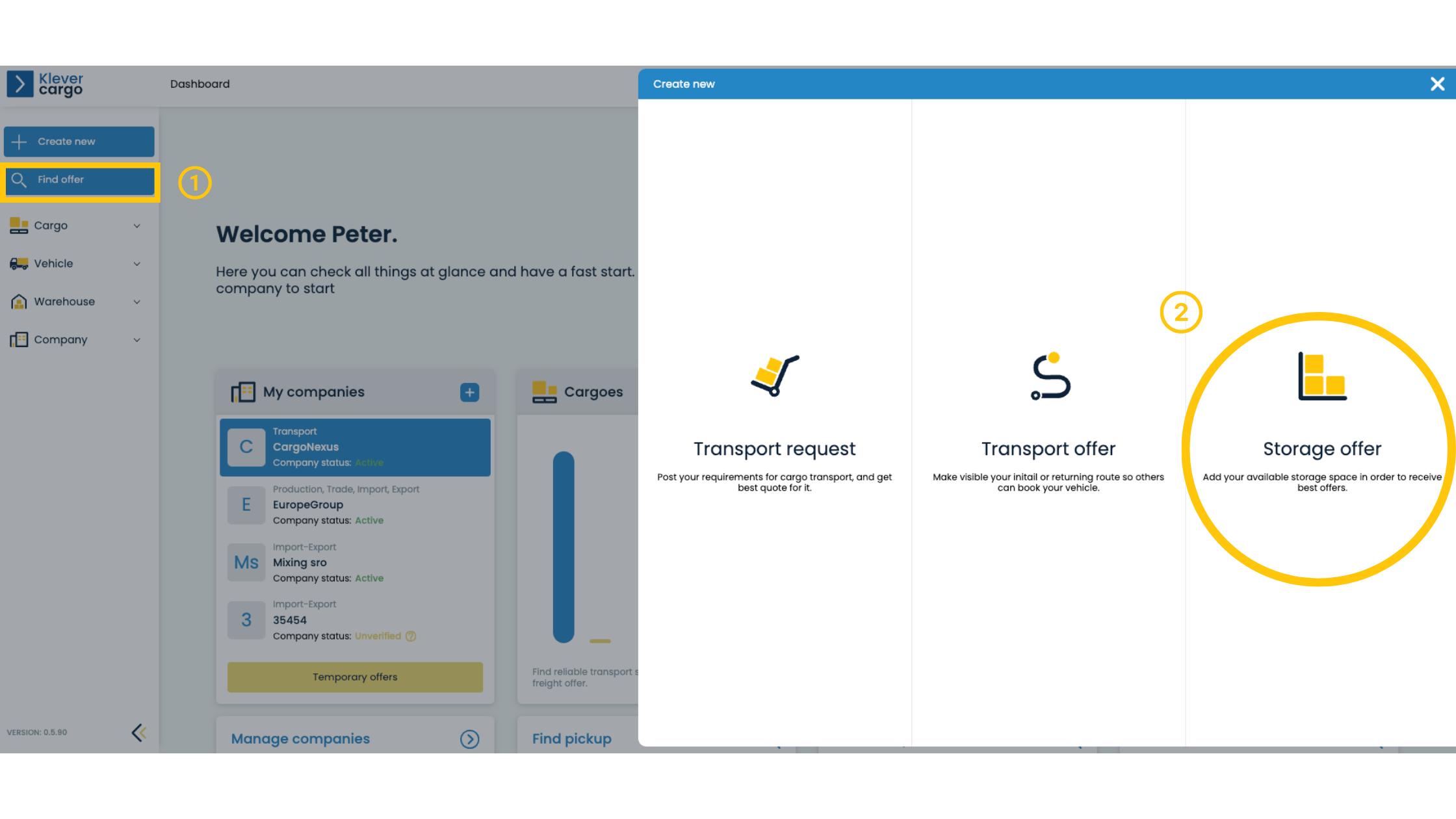 3. Choose the one that suits your needs and click on Request storage.
3. Choose the one that suits your needs and click on Request storage.
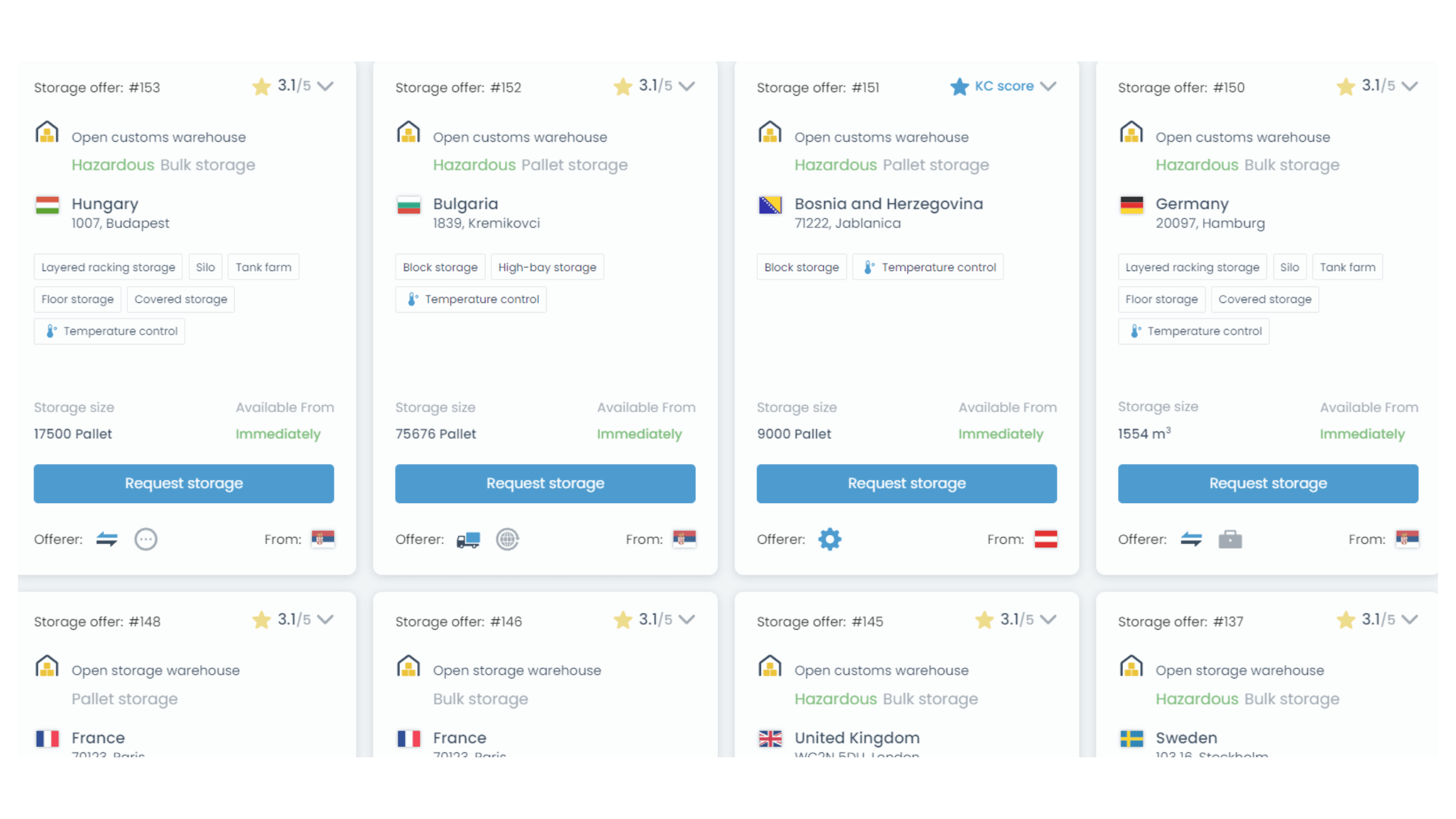
4. Fill out the blank fields with necessary information about your cargo, and then click on Request price.
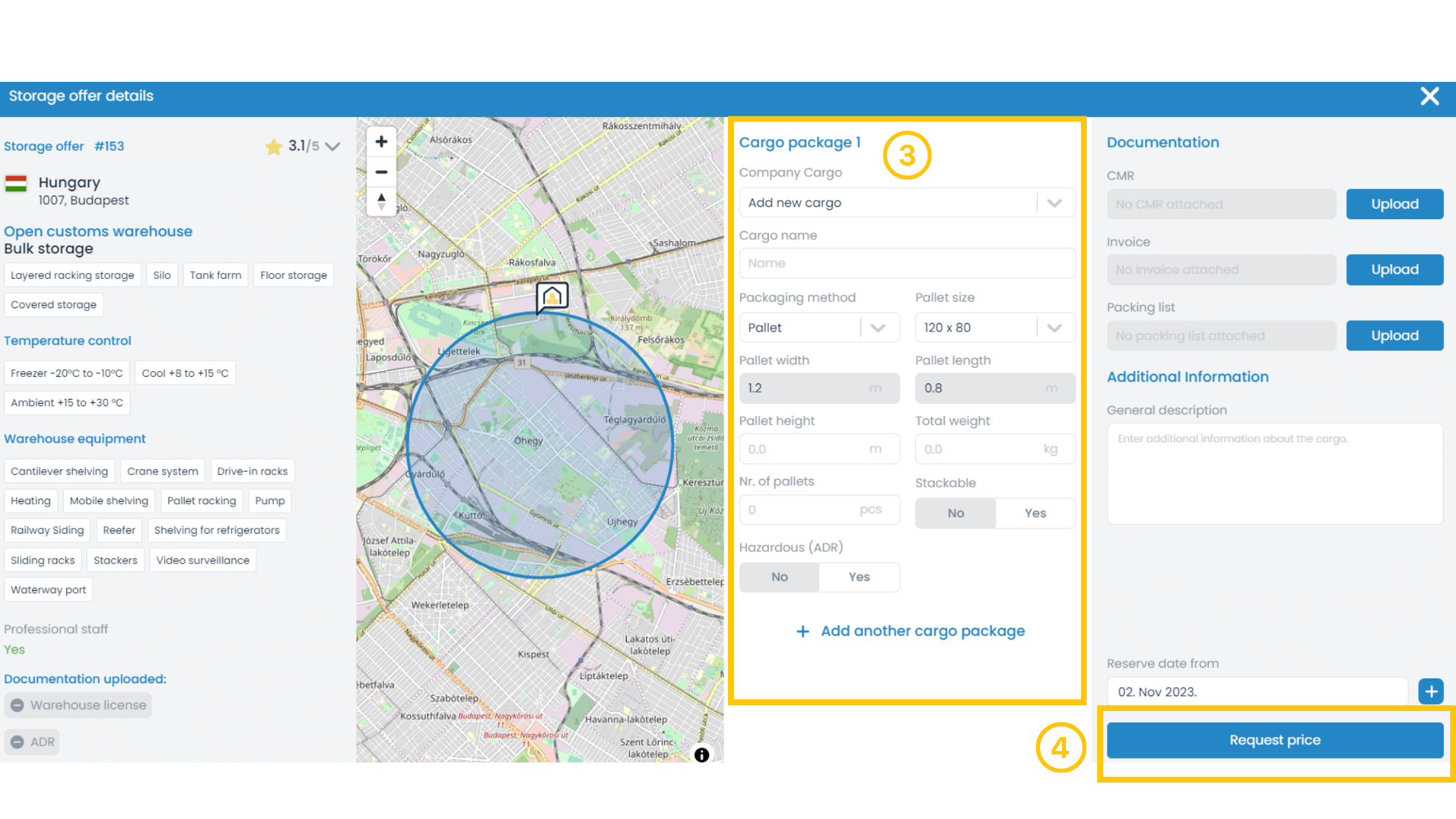
And that’s it!
The warehouse owners will receive your request and send you the price for your cargo.
The whole process is simple and quick, and it helps you save your time, find a warehouse of the right size and capacity, and optimise distribution and transportation costs – all of that in just a few clicks.
Distribution – getting plastic bottles to retailers
Plastic bottles are transported via various modes depending on the distance of delivery, including:
- trucks;
- trains;
- ships;
- planes.
Still, trucks are the most popular option since they’re very accessible and can be used in numerous ways.
Plastic bottles need to be packed securely in boxes or pallets to prevent damage during transportation. In addition, the packaging may also protect against factors like moisture or temperature.
During the transportation of plastic bottles, there are risks of spillage and accidents. To prevent them, companies must follow safety regulations which ensure that such cargo will be packed and delivered safely and in pristine condition.
Minimise these risks, streamline transportation processes and connect with trustworthy transporters through digital service like KleverCargo, a digital freight exchange platform. In a couple of clicks, join a wide network of reliable transporters with diverse expertise, and move your products with ease. It’s as simple as that!
Here’s how you can create a transport request for your cargo, step by step.
1. Register or log in (if you already have an account), click + Create new and choose Transport request.
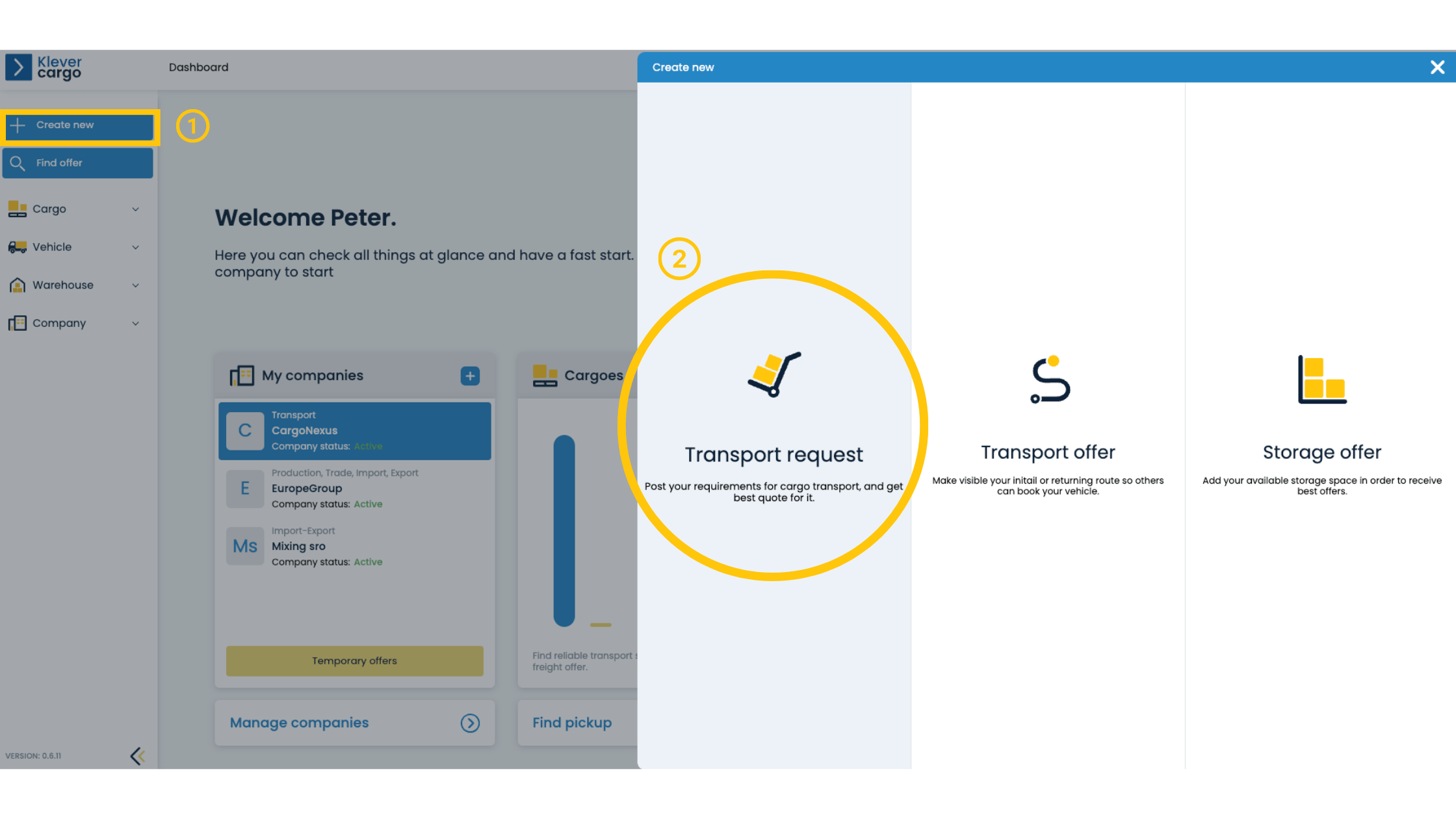
2. Provide the necessary details about your cargo, such as the quantity, destination, or if you have any special requirements.
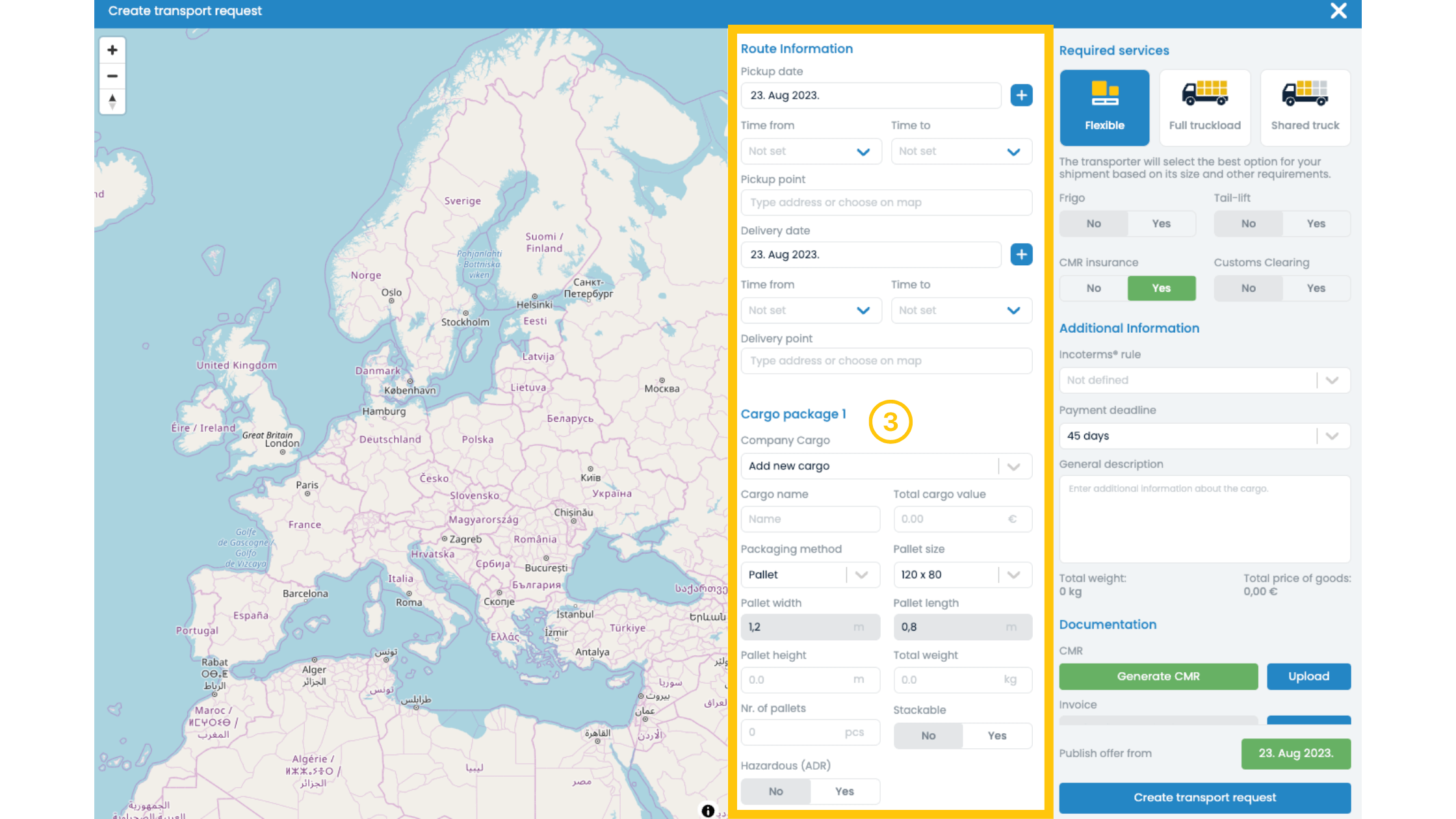
3. When you’re finished, click on Create transport request, and soon you’ll receive quotes from transporters interested in your shipment. You can compare quotes, reviews, and transporter profiles to select the most suitable option for your needs.
Sustainable practices in the plastic bottle supply chain
The impact of plastic bottles on our planet has raised environmental concerns. Yet, the industry is aware of them and these professionals have been putting in the efforts to make the plastic bottle supply chain more sustainable.
Environmental concerns

-
Disposal of plastic bottles
Did you know that there are 1,500 plastic bottles thrown away every day?
Disposal of plastic bottles is one of the most significant environmental concerns. Many plastic bottles end up in junkyards and oceans, contributing to pollution, and harming wildlife and marine ecosystems.
As they’re not biodegradable, they’ll stay in the environment for hundreds of years, and their number just keeps on increasing every day.
-
The use of fossil fuels
Another concern with the manufacturing and transportation of plastic bottles is that it relies on fossil fuels. This further contributes to resource depletion and greenhouse gas emissions, which further creates an even bigger problem – decreases the availability of resources and aggravates climate change.
Sustainable initiatives
-
Recycling

One of the most significant steps toward sustainability is recycling. Recycling plastic bottles reduces the need for making new ones, making a positive environmental impact. Many countries have started recycling programs, and bottle manufacturers are adding recycled materials to their production processes. In fact, as only 23% of bottles are currently recycled, these initiatives should increase those numbers.
-
Circular economy
The concept of a circular economy is another positive trend. Its idea is to use materials as long as possible to reduce waste and make resource usage more efficient. Plastic bottle manufacturers are exploring ways to extend the lifespan of bottles through refill and reuse programs.
-
Environmental certifications
Some bottle manufacturers have adopted environmental certifications to minimise their impact on the environment. Certifications like ISO 14001 demonstrate a dedication to minimising environmental impacts.
-
Renewable alternatives
There is also a growing interest in sourcing plastic bottle materials from renewable sources, like plant-based plastics. These materials have a lower carbon footprint and can be more sustainable alternatives.
In summary

The journey of plastic bottles, from raw material production to distribution, is fascinating. Still, it does have its complexities, and understanding them is vital for an efficient flow of plastic bottles.
As you navigate this supply chain, platforms like KleverCargo can be a key component in connecting you with trustworthy transporters. Register on the KleverCargo platform today to harness these resources’ full potential. Join us in embracing sustainability and responsible supply chain management for a brighter, more eco-friendly future.
